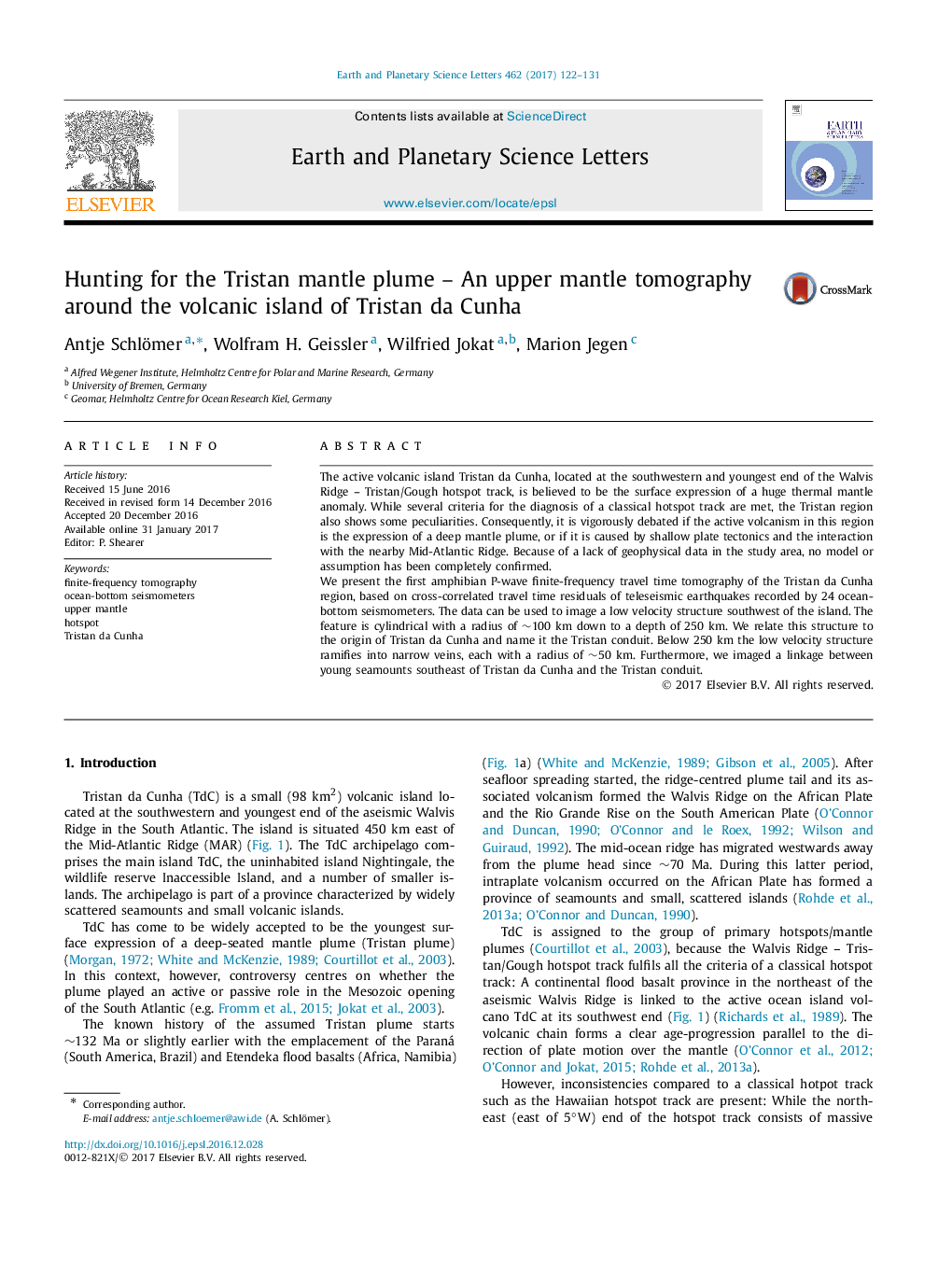| Article ID | Journal | Published Year | Pages | File Type |
|---|---|---|---|---|
| 5779823 | Earth and Planetary Science Letters | 2017 | 10 Pages |
Abstract
We present the first amphibian P-wave finite-frequency travel time tomography of the Tristan da Cunha region, based on cross-correlated travel time residuals of teleseismic earthquakes recorded by 24 ocean-bottom seismometers. The data can be used to image a low velocity structure southwest of the island. The feature is cylindrical with a radius of â¼100 km down to a depth of 250 km. We relate this structure to the origin of Tristan da Cunha and name it the Tristan conduit. Below 250 km the low velocity structure ramifies into narrow veins, each with a radius of â¼50 km. Furthermore, we imaged a linkage between young seamounts southeast of Tristan da Cunha and the Tristan conduit.
Related Topics
Physical Sciences and Engineering
Earth and Planetary Sciences
Earth and Planetary Sciences (General)
Authors
Antje Schlömer, Wolfram H. Geissler, Wilfried Jokat, Marion Jegen,
